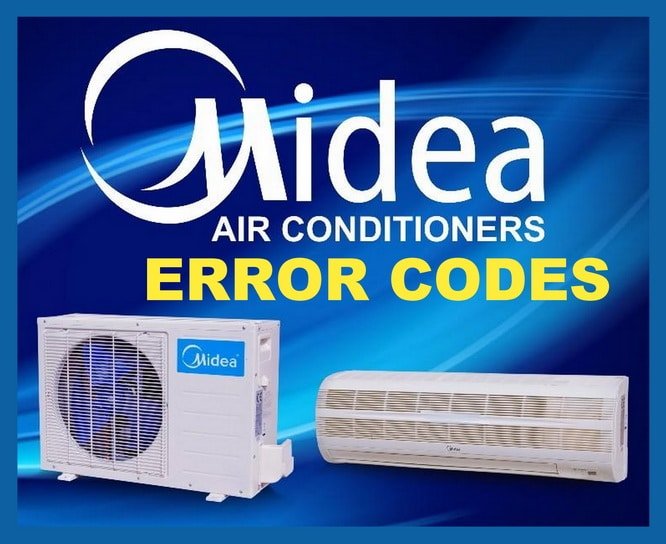
You might be wondering if continuing to use your air conditioner with this error code is a good idea. Sure, your living room is still getting its chill on, but error codes don’t pop up for no reason. They’re your appliance’s way of saying, “Hey, I need some attention here!” Much like ignoring a check engine light on your car, overlooking the OE error might lead to bigger, costlier issues down the line.
What Does Error Code OE Mean?
Understanding error codes can feel like deciphering a mystery novel you never meant to read. In the case of Midea air conditioners, the error code “OE” typically relates to issues with the unit’s drainage system. Imagine your air conditioner as a giant dehumidifier that needs to expel the condensed water it collects. If something’s not right with the drainage, the unit will let you know — hence, the OE code.
Think of it like trying to take a bath with the drain clogged. The water has nowhere to go, right? In an air conditioner, water that can’t drain properly can lead to water leakage, inefficiency, or even damage to internal components. This code is essentially your unit’s plea for help to prevent issues like these.
So, what causes this drainage hiccup? It could be a blocked drain pipe, a kink in the hose, or even a malfunctioning pump. Each of these issues requires swift attention to ensure your unit stays in top working condition. Ignoring it could mean compounding problems, like water damage or higher energy bills because the system isn’t working optimally. To keep your unit running smoothly, it’s critical to identify and address these drainage concerns as soon as possible.
Is It Safe To Keep Using The Air Conditioner?
Here’s the deal: safety should always be your first consideration. While your AC might still be running with the OE error code flashing, continuing to use it without fixing the problem could lead to more severe issues. Imagine trying to run a marathon with a pebble in your shoe — you might still move forward, but why put yourself through the discomfort and risk injury?
Running your air conditioner with a drainage problem can result in water leaking into parts of the unit where it shouldn’t be. This can cause electrical malfunctions or, worse, create a breeding ground for mold, which neither you nor your family want in your living space. Not to mention, a system operating under stress draws more power, leading to higher energy bills.
Ultimately, the risk isn’t just to the air conditioner but to the safety and comfort of your home environment. It’s best to tackle the error code head-on to ensure your air conditioner is running as efficiently and safely as it should.
What To Do If You See Error Code OE
You might be thinking, “Okay, so what should I do now?” First and foremost, don’t panic! Error codes are there to help diagnose and fix problems before they become major headaches. Here’s a straightforward approach you can take if you see the OE code on your Midea air conditioner.
Start by checking the obvious: the drainage system. Ensure that any hoses are free from kinks and obstructions. Sometimes, a simple visual inspection can reveal the problem immediately. If the hose is disconnected or visibly blocked, reconnect it or clear the blockage to see if that resolves the issue.
Next, take a look at the drainage pump, if your unit has one. If it’s not functioning properly, the water won’t be expelled efficiently. Testing or replacing the pump may be necessary, but it’s critical to follow the manufacturer’s instructions or seek help from a professional if needed. Furthermore, ensure the unit is level. An unlevel unit can cause improper drainage leading to the OE code.
Finally, if you’re not comfortable handling these tasks yourself, or if you’ve tried them without success, it might be time to call in a professional. Sometimes the problem could be more complex than a simple blockage or pump failure and might require specialized tools or expertise to resolve.
Preventing Future Errors
No one enjoys dealing with surprise error codes, so how can you prevent them from cropping up in the first place? Like maintaining a car to avoid breakdowns, regular maintenance of your air conditioner can help keep those pesky error codes at bay.
Ensure that the drainage system gets regular checks and cleanings. This is like keeping the gutters on your house free from leaves and debris. By maintaining a clear path for water to exit the unit, you can reduce the risk of encountering the OE error.
Additionally, schedule regular maintenance checks with a certified HVAC technician. Think of this as your yearly health check-up, but for your air conditioner. A professional can spot potential problems before they become severe, and ensure all components are working properly.
Finally, consider operating your air conditioner within the recommended temperature settings. This prevents unnecessary strain on the system, allowing it to operate smoothly and efficiently. By taking these precautionary steps, you’ll help ensure that your air conditioner remains a reliable source of comfort in your home without unwelcome interruptions.